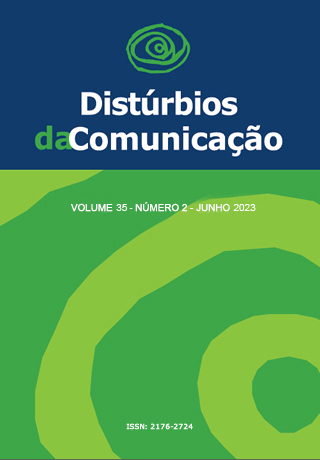Psychic and linguistic constitution of a subject with autism spectrum disorder immersed in a family vulnerable by post-war immigration
DOI:
https://doi.org/10.23925/2176-2724.2023v35i2e54491Keywords:
Autism Spectrum Disorder, Immigrants, Posttraumatic Stress Disorder, MulticulturalismAbstract
Introduction: this article presents the psychic and linguistic constitution of an autistic young man, from a post-war immigrant family, in which themes such as mourning, the transgenerational psychic constitution, and the presence of anxieties in the process come into question of the child development in a unique situation that is the presence of autism. Objective: to analyze the unique effects of immigration and multiculturalism in a case of autism and its therapeutic evolution. Method: longitudinal case study, which used a clinical diary and footage of sessions with observations of the development of R. from eighteen months to adulthood. As a therapeutic approach and analysis of results, contributions from the psychic constitution of psychoanalytic theory, and on linguistic development in an enunciative perspective, were used. Results: Multiculturalism posed a greater challenge to the process of language acquisition by the child with autism, while the consequent silence of the pain of grief, present in adults, hindered verbal exchange and delayed their psychic constitution. Autism, in turn, presented itself as qualitative disorders in communication, requiring greater investment on the part of its caregivers for the acquisition of language to take place, as it needed to be hooked for our culture. Conclusion: Given this situation, this clinical case demonstrates the importance of therapeutic support to the family and the continuous investment in subjectivity, considering and valuing the different cultural codes that make up the family nucleus.
Downloads
References
CID-11- Classificação internacional de doença 11. Disponível em:
CID-10 – Classificação Internacional de Doença 10ª Classificação de transtornos mentais e de comportamento da CID 10 / descrições clínicas e diretrizes diagnóstica., Porto Alegre: Artemd, 1993.
Klin A. Autismo e síndrome de Asperger: uma visão geral. Rev. Bras. Psiquiatr, 2006; 28(1): 3-11.
DSM-5 Manual diagóstico e estatístico de transtorno mentais. American Psychiatric Association. Trad. Maria Inês Corrêa Nascimento et al., Porto Alegre, Artmed, 2014, 948p.
Lebovici S et al. Traité de psychiatrie de l’enfant et de l’adolescent. Paris, 1985.
Figueira I, Mendoliwicz M. Diagnóstico do transtorno de estresse pós-traumático. Rev Bras Psiquiatr, 2003; 25(11): 12-6.
Moro MR. Grandir en situation transculturelle. Coll. Temps d’arret”, Bruxelles, 2013.
Trevarthen C, Aikten KJ. Infant intersubjectivity: research theory and clínica applications. J Child Psychol Psychiatry, 2001; 42(1)3-48.
Muratori F. O diagnóstico precoce no autismo. Salvador: Niip, 2014.
Vivès JM A voz na psicanálise. Reverso, 2013; 35 (66): 19-24.
Lazinik MC A voz como primeiro objeto da pulsão oral. Estilos clin., 2000; 5(8): 80-93.
Winnicott DW Consultas terapêuticas em psiquiatria infantil, Rio de Janeiro: Imago, 1984, 427p.
Lebovici S et al. Eléments de la psychopathoogie du bébé. Paris: Érès, 2009, 207 p.
Nasio JD A dor física. Rio de Janeiro: Zahar, 2008.
Spitz R Le oui et le non: la genèse de la communication humaine. Paris: PUF,1962.
Klinger EF, Souza APR Estereotipia é linguagem? Sentidos na terapêutica de crianças do espectro autista. Dist. Comun., 2014; 26(4): 668-78.
Klein SF, Cardoso JL. Os níveis de análise linguística e a enunciação: a avaliação na clínica dos distúrbios de linguagem. Cadernos do IL, 2018; 56: 131-46.
Infante SS. Singularidade Discursiva na Enunciação em
Segundas Línguas. Cad. Est. Ling., 2000; 38: 109-20.
Downloads
Published
Issue
Section
License
Copyright (c) 2023 Ana Paula Ramos de Souza, Maria Cristina do Rego Monteiro de Abreu

This work is licensed under a Creative Commons Attribution 4.0 International License.









